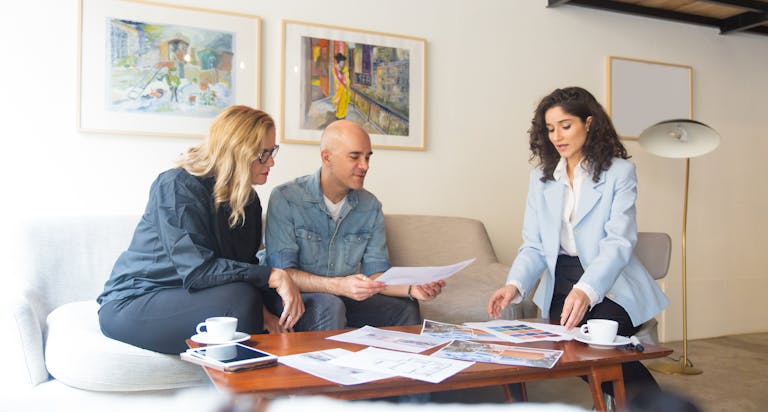
Introduction
As an interior designer, one of the most frustrating challenges you can face is a client who won’t provide a budget. This situation can create numerous obstacles, from planning and sourcing materials to managing expectations. Addressing this issue effectively is crucial for the success of your projects and maintaining a positive client relationship. In this blog post, we’ll explore practical strategies to navigate this tricky scenario, ensuring both you and your client are satisfied with the outcome.
The Importance of a Budget in Interior Design
Why Clients Hesitate to Provide a Budget
Understanding why clients may be reluctant to share their budget is the first step in addressing the issue. Some common reasons include:
- Fear of Overcommitting: Clients may worry that disclosing their budget will lead to overspending.
- Uncertainty About Costs: They might not have a clear understanding of what things cost and fear setting an unrealistic figure.
- Desire for Flexibility: Some clients believe keeping their budget vague allows for more flexibility and negotiation.
The Risks of Proceeding Without a Budget
Proceeding without a budget can lead to various problems, such as:
- Misaligned Expectations: Without a budget, it’s easy for expectations to become unrealistic.
- Project Delays: Uncertainty about finances can cause delays in decision-making and purchasing.
- Strained Client Relationships: Misunderstandings about costs can lead to disputes and dissatisfaction.
Strategies for Getting Clients to Disclose Their Budget
1. Educate Your Clients
Often, clients withhold their budget due to a lack of understanding. By educating them on the importance of a budget, you can alleviate their concerns. Explain how a budget helps:
- Streamline the design process
- Ensure realistic expectations
- Prevent unnecessary delays and frustrations
2. Ask the Right Questions
Instead of asking directly for a budget, try these approaches:
- Value-Based Questions: “What are your top priorities for this project?”
- Range-Based Queries: “Are you comfortable with a budget in the range of $X to $Y?”
- Investment Perspective: “How much are you willing to invest in your space to achieve the desired outcome?”
3. Share Case Studies and Examples
Showing examples of past projects, including their costs, can help clients visualize their budget. This transparency can build trust and provide a reference point for your discussions.
4. Provide a Budget Worksheet
Offering a simple worksheet where clients can outline their desired expenses and priorities can be very effective. It makes the process less intimidating and gives them control over their financial disclosure.
Practical Tips for Working Without a Budget
1. Define a Minimum Viable Project (MVP)
If a client remains unwilling to provide a budget, propose a Minimum Viable Project. This approach focuses on essential elements that deliver the most impact within a modest financial framework. It allows you to proceed while minimizing financial risk.
2. Use Phased Implementation
Suggest breaking the project into phases. This way, clients can see progress without committing to the entire expenditure upfront. It also provides opportunities to adjust the budget as the project progresses.
3. Focus on Value Engineering
Value engineering involves finding cost-effective alternatives without compromising on quality. Highlighting your ability to provide stylish solutions on a budget can reassure clients of their investment’s value.
Insights from the Community
Drawing from the community can add credibility and depth to your advice. Here are three valuable perspectives:
- @oarhaus: “If they say they don’t have a budget or aren’t sure, just reply ‘so you’re good with spending $800k on the kitchen renovation and another $500k on furnishing, right?’ They ALWAYS pause, even the ‘rich’ clients. After that, I’ve always gotten a number.”
- @idgreenlist: “We don’t even take a client without first helping them to establish a budget. Often, our first paid consult is spent doing some work to help them determine a realistic budget if they don’t already have one.”
- @_xoxonita: “I have created an Estimated Project Sheet that breaks down the cost to design a space. This gives clients a better idea of the number they need to set for their budget. I also created a Spreadsheet that breaks down each line item.”
Conclusion
Navigating a project without a clear budget from your client can be challenging, but with the right strategies, you can still achieve great results. By educating your clients, asking the right questions, and being flexible in your approach, you can manage expectations and ensure a successful outcome. Remember, the goal is to build a trusting relationship with your clients while delivering a design that meets their needs and stays within their financial comfort zone.

